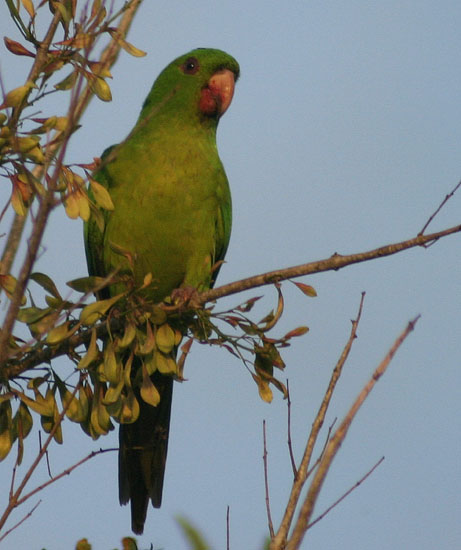Facts About Green parakeet
The green parakeet, a medium-sized parrot indigenous to Central America, ranges from southern Texas to northern Nicaragua. Initially classified in the genus Aratinga as A. holochlora and divided into various subspecies, it is now recognized as a single species, with a distinct subspecies native to Socorro in Mexico’s Revillagigedo Islands.
Primarily green with a yellow beak, the green parakeet's diet consists of seeds, fruits, and corn, occasionally earning them the reputation of crop pests. They thrive in scrub forests, swamp forests, woodlands, and forest clearings.
For nesting, green parakeets prefer tree holes or cliff crevices, where they lay three to four eggs. Post-breeding season, they congregate in large communal roosts. They inhabit a range of woody environments from southern Texas to southwestern Nicaragua. However, the subspecies on Socorro Island, A. brevipes, is critically endangered due to habitat destruction from feral sheep and predation by feral cats, resulting in a significant population decline.
In southern Texas, there is ongoing debate regarding whether green parakeet populations are naturally occurring or feral escapees. However, the groups in the Rio Grande Valley are generally considered native, given their proximity to confirmed populations and historical records. Notably, these birds have become invasive in certain areas, such as the Iberian Peninsula, likely due to escaped pet birds.

 El Salvador
El Salvador